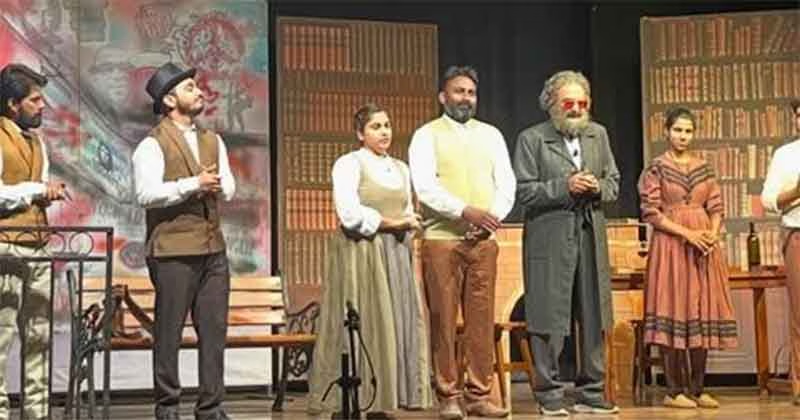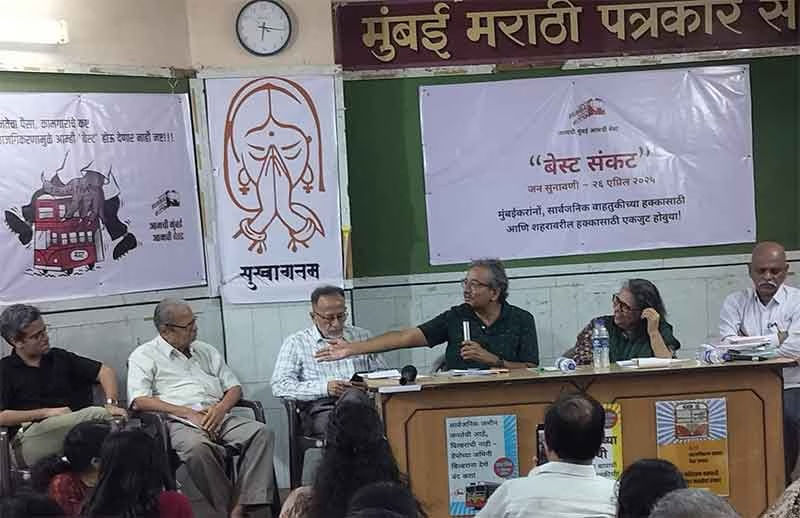
Obviously, those in high places are responsible for the recent stampedes in Prayagraj and New Delhi. Pedestrians and commuters left to themselves can be fairly efficient actually in crowded places.. Let us for example observe one of the most crowded, pedestrian bridges in India, the Dadar junction station railway bridge connecting suburban as well long distance train traffic of both the central railway and western railway. So one can imagine the volume. A story goes that there are fewer divorces among train travellers in Mumbai because people learn to adjust themselves in crowded surroundings. It is only when the authorities are totally callous that situations go out of control.
On the Dadar bridge thousands of people continuously walk in opposite direction facing each other, no barrier separates them and it can be a bit intimidating at times but people intelligently manoeuvre themselves and there is seldom any serious incident. As against this see the irrational behaviour of motorists, this is a well studied phenomenon. When motorists are going in separate lanes going in opposite directions, there should be no conflict. But crashes occur, motorists resort to road rage, there is much arrogance, status consciousness, often motorists going in one lane crash into another lane.
In contrast pedestrians behave admirably, avoiding serious conflict. Look at a crowd on a plaatform where commuters are waiting to take the Karjat local at Dadar station, there is a huge crowd as trains are so few in numbers on this stretch. The platform is almost always full but considering the enormity year after year one seldom encounters a disaster. Needless to say that the railways need to provide better facilities.
Trouble starts when the authorities fail, like a sudden announcement of change of platform as happened in New Delhi station where the Kumbh mela related stampede occurred on the night of February 15.
Had it not been for the patience and restraint of crowds we would have daily stampedes all over India considering the overcrowding that is going since almost a century because of few trains.
Many of us have no idea of the overcrowding that takes place even in reserved compartments in sleeper coaches. People without reservation and perhaps without tickets sleep on every available spot on the floor making visits to the toilet a challenging task .
Part of the reason is corruption of the railway checking staff, they allow excess numbers by taking money . And when the highest in the land call upon people to come in crores to Prayagraj and humans are so desperate to take the dip, there is bound to be a chaos.
My chief memory of a boat travel in the sangam some 15 years ago is of bodies floating in the river, it was such an overwhelming sight, it has always remained in my mind.
It appears that the initial idea of the kumbh mela was environment protection related, it was to examine periodically the health of the river, population was low, crowds were manageable. Also arrangements in the past used to be good by and large. The mela was never subjected to a huge political, egoistic marketing stunt and boast as of now.
Kumbh Melas used to be much better organised in the past. So much so that Rahul Mehrotra, Mumbai and Harvard based architect and professor, did a lot of research and brought out a book after the previous Allahabad Mela of 2013. It was co-edited with Felipe Vera, this book Kumbh Mela Mapping the Ephemeral City registers the work of over fifty Harvard professors, students, administrative staff, and medical practitioners that with the support of the South Asia Institute made the pilgrimage to Allahabad, India, to the Kumbh Mela site in 2013, to analyze issues that emerge in any large-scale human gathering. It compiles research findings including contributions from different Harvard faculties representing a range of schools participating in the project such as Diana Eck (Harvard Divinity School), Tarun Khanna (Harvard Business School), Jennifer Leaning (Harvard School of Public Health) and John Macomber (Harvard Business School). The volume presents the comprehensive research findings and includes city maps, aerial images, analytical drawings and photographs of this spectacular Ephemeral Mega City for the Kumbh Mela. Kumbh Mela is the largest religious celebration on earth and the biggest public gathering in the world. The resulting settlement is a virtual mega city!
I remember clearly because Mr Mehrotra gave me a copy then.
The Kumbh Mela deploys its own roads, pontoon bridges as well as tents serving as residences and venues for spiritual meetings, and social infrastructure.
As the location of the world’s largest single-purpose gathering of people, the 2013 Kumbh Mela obviously required a significant organizational effort from those charged with planning it – but what is less obvious is exactly how this need to plan can be squared with the nature of the Kumbh Mela itself. Located in the floodplain of the river Ganges, most of the 23.5-square-kilometer area of the festival (commonly referred to as the nagri) remains underwater until a few months before the festival, and organization is at every stage challenged by the uncertainty and ephemerality of the festival itself.
Mehrotra, standing at the Kumbh Mela at night looking towards an endless functioning city where the temporary construction of the nagri is fused with the city of Allahabad, there are two things that one cannot avoid asking: 1) How was this enormous city planned in terms of scale and complexity? 2) How is the city actually constructed? One of the most interesting elements about the construction process of the city is that unlike more static and permanent cities—where the whole is comprised of the aggregations of smaller parts, constructed in different moments that are tied together by pre-existing and connecting urban infrastructure—the city of the Kumbh Mela is planned and built all at once, as a unitary effort. The disaster of January 29 was entirely man-made, a result of megalomania, creating a gigantic, unprecedented spectacle, the idea was to take credit , use it for politics.
The authorities who are notorious for denying adequate travel amenities for ordinary people in daily life went out of the way to organise entry of millions of people into Allahabad for the Mela. The disaster is hardly surprising.
They go out of their way also for making massive traffic arrangements for elite events like the Cold Play concert for the ultra rich in Mumbai or cricket matches. Instead of insisting on use of pubic transport, private transport is encouraged through huge parking lots.
On the other hand democratic, peaceful marches are denied permission on the pretext that they will hinder traffic. But elite programmes are slavishly showered with all arrangements despite their causing massive traffic jams. It is all so visible.
2019. Another characteristic of the Kumbh is that ‘no one gets an invite for the Kumbh’ – people follow a Hindu calendar system, the panchanga, and accordingly head towards the site. This year the Yogi government destroyed this age-old tradition, sending ‘invites’ to villages in India and to 192 countries to attend the Kumbh.
The recent stampedes were a result of the authorities’ age old neglect of public transport, totally irrational pampering of private motor car vehicles and VIP travel. There are basic tenets of transport planning like restraining traffic, reducing private transport , encouraging public transport, prioritising pedestrians and so on. These are ignored with contempt. And the penalty is paid by common people for the sins of the establishment. Any number of dips in the holy sangam by such elements can help these perpetrators achieve moksha or wash their sins.
Vidyadhar Date is a senior journalist, culture critic and author of a book on public transport
















































